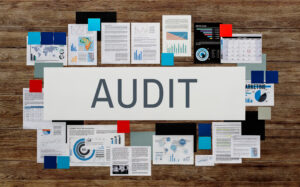Aligning ISO 9001 with Organizational Goals
Course Name: ISO 9001 Executive Overview
SEO Keyword: ISO 9001 Executive Overview
Introduction
The ISO 9001 standard is more than a quality management tool; it is a strategic framework that enables organizations to align their quality management system (QMS) with broader business objectives. By integrating quality practices with organizational goals, leaders can drive operational efficiency, foster continuous improvement, and enhance customer satisfaction. This article explores the process of aligning ISO 9001 with organizational goals and the benefits of doing so.
Table of Contents
- The Importance of Alignment
- Steps to Align ISO 9001 with Organizational Goals
- Challenges in Alignment and How to Overcome Them
- Benefits of Aligning ISO 9001 with Goals
- Conclusion
- Frequently Asked Questions
The Importance of Alignment
Aligning ISO 9001 with organizational goals ensures that the QMS contributes to the broader mission and vision of the organization. Key reasons include:
- Strategic Consistency: Ensures that quality initiatives support overall business objectives.
- Improved Resource Allocation: Focuses resources on activities that add value and align with strategic priorities.
- Enhanced Accountability: Integrates quality responsibilities across departments, fostering a unified approach.
Steps to Align ISO 9001 with Organizational Goals
Effective alignment of ISO 9001 with organizational goals requires a structured approach. Follow these steps:
- Step 1: Define Organizational Goals: Clearly articulate your organization’s mission, vision, and long-term objectives.
- Step 2: Identify Key Quality Objectives: Establish measurable quality objectives that directly support strategic goals.
- Step 3: Conduct a Gap Analysis: Evaluate the current QMS to identify gaps between existing processes and desired outcomes.
- Step 4: Engage Stakeholders: Involve employees, customers, and partners to ensure alignment of priorities and expectations.
- Step 5: Monitor and Adjust: Regularly review progress toward quality objectives and make adjustments to ensure continued alignment.
Challenges in Alignment and How to Overcome Them
Organizations may face challenges when aligning ISO 9001 with their goals, such as:
- Resistance to Change: Employees may resist new processes or changes to existing workflows. Overcome this by providing training and communicating the benefits of alignment.
- Lack of Clarity: Ambiguities in organizational goals or quality objectives can hinder alignment. Address this by clearly defining both.
- Resource Constraints: Limited time, personnel, or financial resources may slow progress. Mitigate this by prioritizing key initiatives and seeking external support if needed.
Benefits of Aligning ISO 9001 with Goals
Aligning ISO 9001 with organizational goals delivers numerous advantages, including:
- Enhanced Efficiency: Streamlined processes reduce waste and improve productivity.
- Increased Customer Satisfaction: Aligning quality initiatives with customer needs builds trust and loyalty.
- Stronger Competitive Edge: Demonstrates a commitment to quality, positioning the organization as a market leader.
- Improved Decision-Making: Access to integrated quality and strategic data supports informed decisions.
Conclusion
Aligning ISO 9001 with organizational goals transforms the QMS into a strategic tool that drives operational success and customer satisfaction. By following a structured approach to alignment, engaging stakeholders, and addressing challenges, organizations can unlock the full potential of ISO 9001 and achieve long-term success. The ISO 9001 Executive Overview course equips leaders with the knowledge to lead this alignment effectively.
Frequently Asked Questions
- How does ISO 9001 support organizational goals?
ISO 9001 provides a framework for quality management that aligns with strategic priorities, improving efficiency and customer satisfaction. - What are the first steps in aligning ISO 9001 with business objectives?
Start by defining clear organizational goals and conducting a gap analysis to identify areas for improvement.
Contact Us for More Information
For further details about the ISO 9001 Executive Overview certification and training, visit our ISO 9001 Executive Overview page, our ISO 9001 Overview Consultants page, or register for the ISO 9001 Executive Overview course on our website. You can also contact us for more information.



